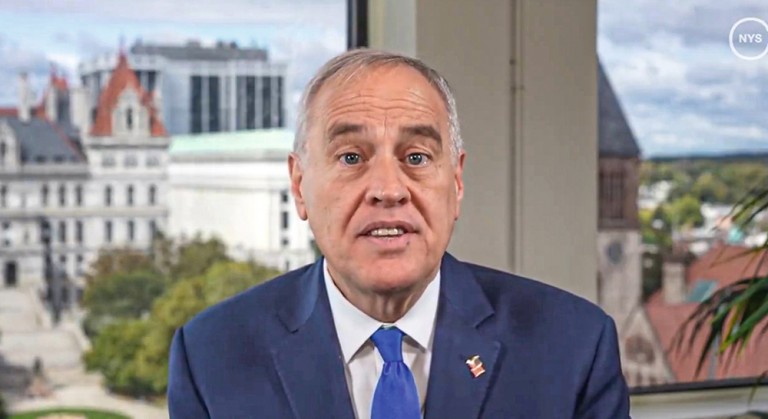By Forum Staff
Young workers in the Big Apple between the ages of 16-24 continued to face a high 13.2 percent unemployment rate in 2024, which was 3.6 points higher than in 2019 and higher than all other age groups, according to a report issued by State Comptroller Tom DiNapoli.
Despite significant improvement in 2023, the city’s youth unemployment rate was higher than the national rate. Black, Hispanic, and Asian youth, especially males, continued to face even higher unemployment rates, with young Black workers at 23.8 percent, nine points greater than in 2019.
The report also found:
- The 19.5 percent unemployment rate for young Asian workers citywide is now more than double what it was in 2019 and is significantly higher than the national unemployment rate for young Asians.
- The unemployment rate for young Hispanic workers ticked up to 17.2 percent from 2023 to 2024, the only racial and ethnic group with a modest increase.The unemployment rate for young white workers saw the largest decline, 4.7 percent, over that same period, and is currently just over its 2019 level.
- In 2023, 37.7 percent of young workers citywide worked in lower wage industries such as leisure and hospitality and retail trade, a smaller share than in 2019.
- Young male workers in the city were initially less impacted by the pandemic than their female counterparts, but they have been slower to find jobs post pandemic. While the unemployment rate for young males improved between 2023 and 2024, it was still five points above its 2019 level and much higher than the 1.7 points for all male workers.
Due to their limited experience, young workers tend to have fewer job options and are more likely to work in industries such as leisure and hospitality and retail trade, DiNapoli noted. In the city, these industries have yet to fully recover their pre-pandemic losses. As of March 2025, restaurant jobs were 2.5 percent below their pre-pandemic level and retail trade jobs were 15.3 percent lower. Job openings in retail trade and accommodation and food services nationally declined from January to March 2025.
Self-employment among the youth labor force increased dramatically, by 2.5 times citywide between 2019 and 2024, a larger increase than seen nationally (1.4 times). Elevated youth unemployment despite strong levels of entrepreneurship corresponds with an increase in the pursuit of multiple jobs. Between 2019 and 2024, the number of young people with multiple jobs in the city rose by nearly 55 percent.
Youth workforce development program outcomes have improved in recent years. For example, the The City’s Summer Youth Employment Program has seen participation, stipend, and wage levels rise. Programs like SYEP have been shown to reduce the likelihood of juveniles engaged in the criminal justice system. However, major cuts to federal grant programs may impact SYEP’s capacity going forward. In fiscal year 2024, federal grants provided about 19 percent of the funding for SYEP. A corresponding 19-percent cut in participation would equate to approximately 18,400 fewer employed youth and nearly $24 million in lost wages.
Continued growth in the number of youths working multiple jobs or starting new businesses out of necessity suggest further monitoring and support of youth employment is needed. Gathering and comparing data on outcomes among workforce development programs may also increase opportunities for gainful employment and improve the efficiency of the limited dollars for these programs. Efforts to support local entrepreneurs, improve job accessibility, and enhance employment stability are necessary to keep New York City as a hub for talent and promote social mobility.

